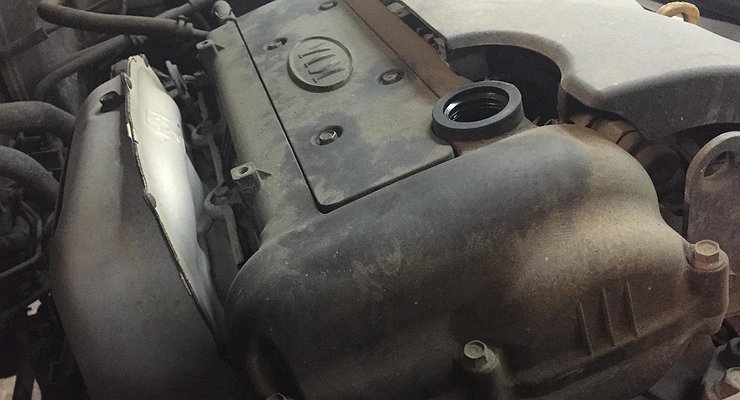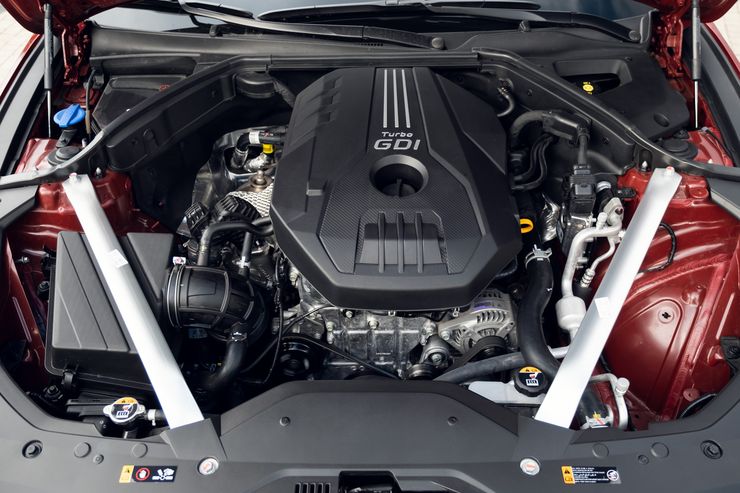Check engine wear yourself in 5 minutes
- November 18, 2022
- 0
When inspecting a used car, it is often not possible to call in the help of specialists and a proven service is a long way off. But even
When inspecting a used car, it is often not possible to call in the help of specialists and a proven service is a long way off. But even

First, ask the seller for an “iron horse” for inspection with a cold engine. The fact is that many, even serious problems, especially when they are just starting, are not so obvious with a warm engine. And during a cold start you will hear various strange noises, which are used to assess certain problems.
Inspect the drive belt and, if possible, the timing belt. The sides of both consumables must be free of fraying and signs of delamination. Of course, when starting the “heart” of the car, the rollers should also work quietly, without characteristic whistles or other extraneous sounds.
Remove some oil from the dipstick and rub it with your fingers. Fine metal dust in the lubricant indicates increased wear of parts.
Next action. Unscrew the oil filler cap and inspect it. Have you seen a thick white layer? This means that the lubricant is mixed with antifreeze, which enters through a broken cylinder head gasket (cylinder head). Or the cylinder head may have a broken geometry, which is even worse. From such a machine it is better to immediately run away.
Then take a flashlight and look through this neck at the surfaces of the engine parts that are accessible to the eye. Hard deposits resembling a crust are a clear sign that they have saved on maintenance and poured cheap oil.
Another nuance. There should not be much smoke coming out of the dipstick hole. This is how crankcase gases break through, that is, the engine has problems in the piston group.
We have only listed those disturbances that can be identified by eye or ear. If you notice such a thing, immediately refuse to buy. In other cases, the exact condition of the device is determined only by an experienced diagnostician. Therefore, go to the service, where there are competent specialists and professional equipment. Only make a decision after their judgment.

First, ask the seller for an “iron horse” for inspection with a cold engine. The fact is that many, even serious problems, especially when they are just starting, are not so obvious with a warm engine. And during a cold start you will hear various strange noises, which are used to assess certain problems.
Inspect the drive belt and, if possible, the timing belt. The sides of both consumables must be free of fraying and signs of delamination. Of course, when starting the “heart” of the car, the rollers should also work quietly, without characteristic whistles or other extraneous sounds.
Remove some oil from the dipstick and rub it with your fingers. Fine metal dust in the lubricant indicates increased wear of parts.
Next action. Unscrew the oil filler cap and inspect it. Have you seen a thick white layer? This means that the lubricant is mixed with antifreeze, which enters through a broken cylinder head gasket (cylinder head). Or the cylinder head may have broken geometry, which is even worse. From such a machine it is better to immediately run away.
Then take a flashlight and look through this neck at the surfaces of the engine parts that are accessible to the eye. Hard deposits resembling a crust are a clear sign that they have saved on maintenance and poured cheap oil.
Another nuance. There should not be much smoke coming out of the dipstick hole. This is how crankcase gases break through, that is, the engine has problems in the piston group.
We have only listed those disturbances that can be identified by eye or ear. If you notice such a thing, immediately refuse to buy. In other cases, the exact condition of the device is determined only by an experienced diagnostician. Therefore, go to the service, where there are competent specialists and professional equipment. Only make a decision after their judgment.
Source: Avto Vzglyad
Donald Salinas is an experienced automobile journalist and writer for Div Bracket. He brings his readers the latest news and developments from the world of automobiles, offering a unique and knowledgeable perspective on the latest trends and innovations in the automotive industry.